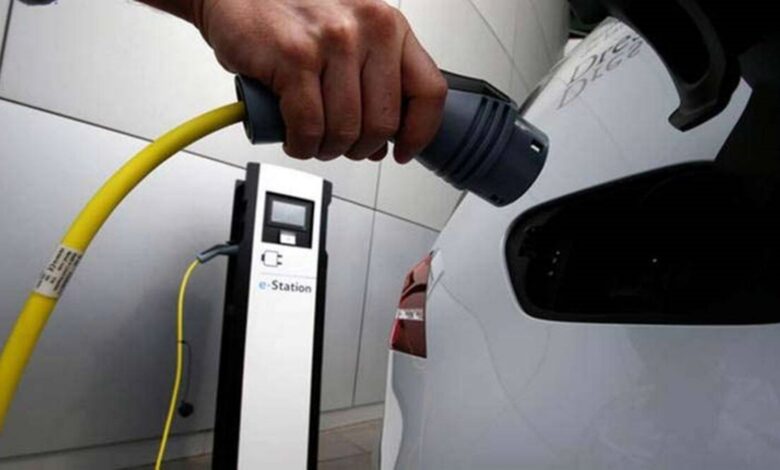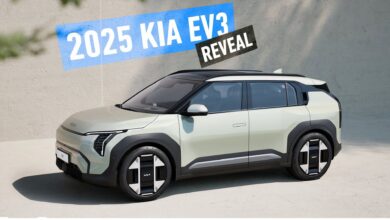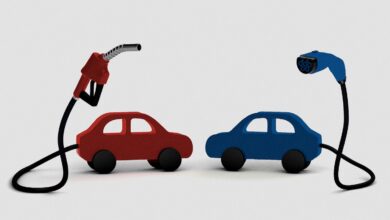Thermal runaway to shorter lifespan: Extreme heat is testing EV batteries | Business News

With mercury in northern India soaring above 50 degrees celsius in recent weeks, electric vehicle (EV) owners have reasons to worry about the impact of extreme heat on their lithium-ion batteries, which function optimally at ambient temperatures up to 35 degrees celsius. In sweltering Indian summers, elevated temperatures can increase fire risk and reduce range in the short-term, and cause accelerated degradation, reducing longevity over the long run.
Although evolving battery standards mandate EV batteries to be equipped with battery management systems (BMS), experts argue for further development of standards, stricter enforcement, and more realistic claims regarding battery longevity to effectively mitigate risks and enhance the value proposition for EV owners. Policymakers are also of the view that localisation of battery manufacturing will be an important step in that direction.
Impact of extreme heat on EV batteries
“EVs are designed to withstand extreme temperatures; however, with parts of northern and central India facing severe heat waves, high temperatures may affect EV battery efficiency, decreasing the overall capacity. Moreover, increased humidity may also lead to overheating and battery damage,” said Poorvak Kapoor, Vice-President of Technology at Euler Motors, a New Delhi-based manufacturer of cargo-carrying electric three-wheelers.
When exposed to high heat, the flow of ions in a battery gets accelerated, which in turn causes unwanted chemical reactions that age the battery prematurely. This process can take place even when batteries are at rest but the EV is exposed to direct sunlight. In extreme cases, exposure to high temperatures can also lead to thermal runaway, which can cause fires.
“On a normal day, when the temperature hovers between 25 and 30 degrees celsius, a fully charged battery delivers optimal performance, but in extreme heat, efficiency can drop to around 90 per cent because the entire sub-system of electrochemical, electrical, and electronic components gets heated up, leading to overall efficiency loss. Although efficiency and longevity are correlated, high temperatures affect longevity far more than efficiency,” Kapoor told The Indian Express.
With regards to efficiency, high ambient temperatures specifically affect the range of EVs. Recurrent, a Seattle-based EV analytics startup catering to industry stakeholders, did an analysis of over 7,500 EVs operating in hot conditions in the United States and found that EVs can lose between 20 to 30 per cent of total range in temperatures above 38 degrees celsius.
“The extent of impact varies across different EVs due to their distinct battery chemistries and cooling technologies. Lithium-ion batteries are particularly heat-sensitive, while solid-state batteries exhibit greater resilience. EVs equipped with sophisticated cooling and battery management systems can partially counteract these effects, but persistent high temperatures generally have a detrimental impact on all types of EV batteries,” explained Kunal Arya, Founder and Managing-Director of Zelio Ebikes, an EV two-wheeler startup.
Among lithium-ion batteries, the lithium iron phosphate (LFP) chemistry is more thermally stable compared to the lithium cobalt oxide (LCO) or the lithium manganese oxide (LMO) chemistries. In addition to affecting batteries at the electrochemical level, high temperatures also create heat pockets in battery packs. Usually, densely populated battery packs in electric two-wheelers are more prone to heat-related issues compared to three- and four-wheelers, which offer options for more efficient liquid cooling systems.
EV manufacturers take to cooling systems
“Managing heat for an electric two-wheeler is more challenging but it is possible if you design and engineer the battery pack correctly. Safety, quality and longevity for high temperature usage is an outcome of thorough engineering and testing. The Ultraviolette battery pack can withstand an ambient temperature of 55 degrees celsius and still deliver the claimed range without compromise in safety or long-term effect concerns,” explained Vinayak Bhat, Technical Director at Bangalore-based Ultraviolette Automotive, a manufacturer of electric motorcycles.
To mitigate the impact of high temperatures on battery performance, EV manufacturers use air- and water-based cooling systems to offset the increase in ambient temperature. For instance, Euler Motor’s liquid cooling technology can help battery packs endure temperatures up to 70 degrees celsius.
“These cooling systems are used when the car is either driven or being charged. However, for battery EVs, the battery temperature also needs to be controlled when the vehicle is switched off. This is managed through insulation of the battery pack. The insulation material and its thickness is carefully chosen so that the cells are always cooler by 5 to 7 degrees celsius as compared to the ambient temperature,” Anand Kulkarni, Chief Products Officer of Tata Passenger Electric Mobility, told The Indian Express.
“For thermal management, the industry is moving from air cooling to liquid cooling, which is globally preferred to dissipate heat generated during charge and discharge. This system delivers the best performance for maintaining a battery pack in the expected temperature range. Different technologies are also being evaluated, such as immersion cooling and phase change material for higher battery performance. To enable faster charging capabilities, advanced active cooling technologies are also being developed for larger battery packs,” Kulkarni said.
Testing standards try to catch up
In response to challenges associated with high ambient temperatures, the regulatory ecosystem is also catching up with advanced standards for EV battery testing. “The AIS-156 and AIS-038, which were developed after EV fires in 2022, have had a significantly positive impact on the industry as since then EV fires have reduced. The standard makes battery management systems (BMS) mandatory. Earlier, instead of BMS, people were using any other controller, which was cheaper and not proper,” said Debi Prasad Dash, Executive Director of India Energy Storage Alliance (IESA).
“Latest BMS technologies employ predictive algorithms and real-time temperature monitoring for each cell. They can divert power from hotter cells and activate cooling systems proactively. Many Indian-made EVs now have basic thermal management, but only premium models offer advanced systems. The industry is working to make this technology more affordable,” said Daiva Prakash G, senior executive at Amara Raja Advanced Cell Technologies.
“The testing standards also make it mandatory for a battery pack to have a venting system. If there’s space in a pack, the hot air can go out, which restricts fire propagation. The standard also requires proper cell quality testing before making a battery pack,” Dash explained.
Still, battery experts and industry representatives argue that the testing ecosystem needs to be developed further. Firstly, there is still a lot of grey area in the scope and application of testing standards. Then, the number of testing agencies also needs to be ramped up in line with the growth in demand for EVs. Moreover, it is necessary to ensure that the batteries being tested are also ones that are placed in the market.
Testing of batteries in conditions resembling India’s summers is also critical. “While the AIS-038 regulation is a welcome mandate when it comes to battery safety, it is recommended that the battery pack is tested at 45 degrees celsius– which is generally the ambient temperature in summers in India. The testing should be conducted at various drive cycles and by charging the pack through a fast charger to validate the thermal performance of the battery by simulating real life customer use cases,” Kulkarni said.
Similarly, when making battery longevity claims, EV manufacturers must evaluate longevity under conditions that mimic real-world conditions. Currently, longevity claims are not made keeping in mind battery degradation caused by hot summers, experts said.
Localisation is key
According to some, one way to ensure optimal battery performance in Indian summers is to design and manufacture batteries in India. “Developing our own technology customised to Indian requirements is a big factor to the whole sustainability of the advanced cell chemistry (ACC) ecosystem. I heard a leading speaker in a recent symposium who said that any R&D done outside India or any ACC battery developed outside India will not suit Indian conditions in extreme heat situations. That is a very perturbing statement from the safety angle. R&D organisations that we have now and those who are working for the development of customised ACC cells which suit our conditions is also a need of the hour,” said Vijay Mittal, Joint-Secretary, Ministry of Heavy Industries, at an event in April. Mittal oversees the government’s Production Linked Incentive (PLI) scheme for ACC.
“You have to design the battery pack as per Indian field conditions, not Chinese field conditions. China is so cold but that’s not the case here. The environmental conditions are different. So here, you cannot just go by that copy-paste trend. [Localisation] needs R&D efforts backed up by extensive field testing,” said Avnish Arora, an expert on battery technologies and co-founder at Asap Engineering and Consultants.
“Companies are experimenting on different electrolyte compositions and cathode materials at cell level for better performance at higher working temperatures. Thermal studies across India are guiding such designs. Local manufacturing also means faster iteration based on real-world data. It’s about making batteries in India, for India’s climate,” Amara Raja’s Prakash G explained.




